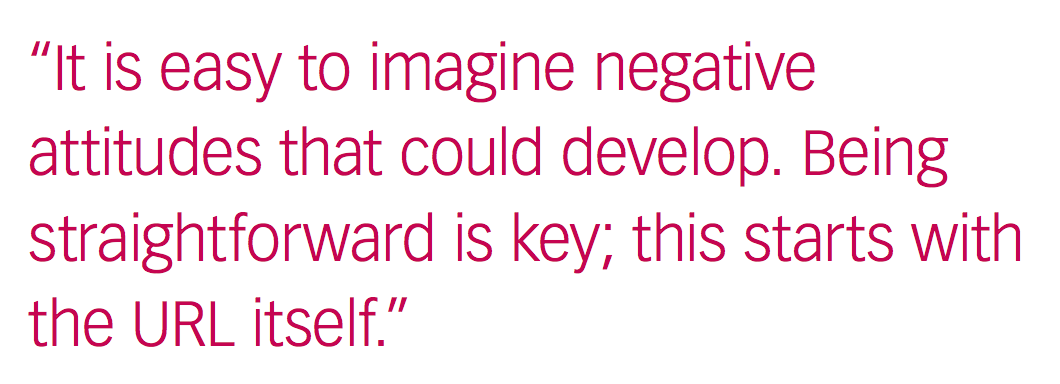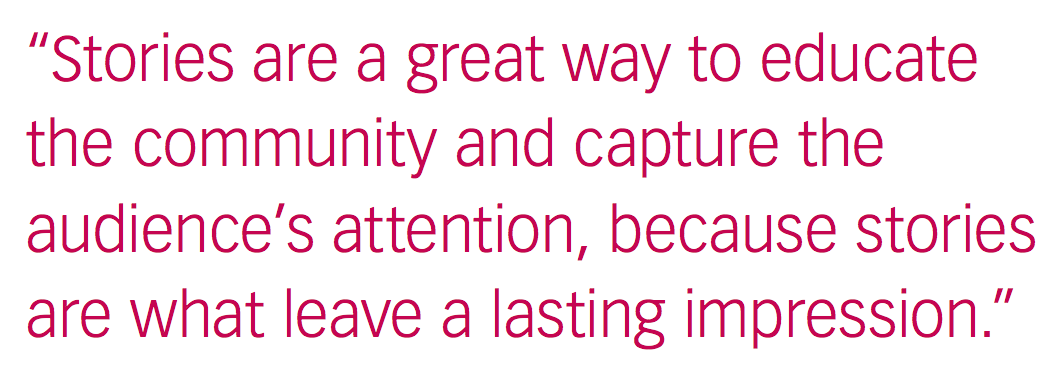Content Connection: The Push for Story-driven Engagement
Pharmaceutical Executive
As drugmakers seek engagement, patients are buried in content. Thus, quality and appealing material is a must to grab a share of the narrow bandwidths that patients possess.
Amid today’s digital deluge of health engagement content flooding consumers-and their devices-a new movement to activate patients with compelling, educational and interactive content is building momentum-and the audience is a captive one
“Content is King” belongs in the folkloric scrolls of early Internet memes, a proverb from the sagacious Bill Gates dating back to ancient pre-Y2K history (1996). Twenty years later, a lot could be said about the pros and cons of our era’s news and social medias, but given the plethora of multimedia options-just consider the lineups available on Amazon, Hulu, Netflix, HBO, Showtime, YouTube, Twitter, Facebook, Snapchat, etc.-content, much of it high quality, is at our fingertips.
And video content is just one branch. It’s as hard to keep up on my reading list as TV shows and movies. My bag is stuffed with my boss’s old copies of the Financial Times and the Parents magazine, which I didn’t know I needed, nor did I subscribe to, but somehow the fact that I have a one-year-old seeped into the ether. Regardless, magazines and newspapers often take a backseat to the dozens of digital/mobile options, essential websites, news apps, blogs and podcasts. (We here at Pharm Exec know you have a lot of options, so, thanks for reading).
Capturing viewers’ eyes or ears is step one, while holding their attention and engagement is a whole new challenge. Drugmakers are in an analogous situation, facing the challenges of initiating patients and sustaining them, engaged, adherent and activated. Technology has enabled patients to meet in chat rooms, coalesce on social media channels and publish stories via blogs. Meanwhile, the industry has kept digital media at arms length, contemplating the potential, while fearful of risks for monitoring, controlling conversations as well as potential obligations to document and report issues like adverse events.
With a wide digital gap between drugmakers and patients, perhaps widening as the pace of the youth’s digital use outpaces the industry’s ability to stay current, groups who are a step removed from industry see the potential value offering of simply keeping up. By broadcasting patient relevant material at this wide-open frequency, these groups enable patient communities to gel by providing new and engaging content, space to interact and outlets to tell their own stories.
Content for patients
The marketplace for our attention is a hot one, and we thus are plagued by shallow clickbait. “Health”-related stories, be they about the pros/cons of coffee or the lethalness of sitting, drive loads of traffic and are easily clickable from the less savory purveyors of top 10 lists or your anti-vaxxer cousin’s Facebook profile. In addition to “stories” grabbing your attention by preying on your well-being and

body image issues, there’s a new world of thousands of mobile phone applications that classify themselves under health categories. In fact, the AMA’s CEO, Dr. James Madara, considers them pernicious enough to label the field of mHealth, at large, as “snake oil.” With assertions ranging from acne treatment via light therapy (your phone’s lights) or pregnancy tracking, the field is prone to similar regulations as nutrition and supplements, though claims towards IQ and memory improvement have seen crack downs recently.
Those doing responsible health and medical-related searches can find solid content on Wikipedia, WebMD, Mayo Clinic and even pharma sponsored, unbranded, disease information webpages, though a little knowledge can be a dangerous thing, especially for anyone who leans towards hypochondria. These references are helpful resources for many, offering valuable information to bring to doctors who have learned to be prepared for patients with printouts in hand.
Where online reference tools might have traditionally gone the proverbial “inch deep and a mile wide” across many diverse indications, Health Union aims to go a mile deep in a limited, but growing set of health conditions, according to CEO and Co-Founder Olivier Chateau. Navigate to one of Health Union’s nine websites like Migraine.com or Asthma.net and you’ll find a sleek layout akin to Gawker or Vox with daily features and engaging original art that gives the vibe of serious information that is approachable, readable and share-ready.
Chateau explained that idea for Health Union’s sites has been to build what he wished could have been possible during his tenure in marketing on GlaxoSmithKline’s diabetes franchises. “We were looking at the possibilities to impact and connect with patients on social media and thinking…Wow! Just imagine what we could do.”
For Health Union, the technology can bring people in, but solid content will keep them coming back. “There is a prevailing concept that we can conquer engagement and challenges around access and drug adherence by reaching patients with technological advances that will bring about these changes,” notes Chateau. “We see tech as a tool for engaging, but more importantly, we think the key will be content.”
It starts with a simple website; getting the name of disease.com or .net goes a long way in building trust and, obviously, recognition. Once patients can connect with their condition-specific site that has accurate, helpful basics and background information, daily content with professionally written articles keep patients engaged and coming back to the site and subscribing to the newsletter.
Health Union has grown to nine live communities with 80-plus contributors and moderators. About 10 contributors work on each site with some overlap, many of whom are patient advocates and physicians. In addition to content production, there are approximately five moderators per site. “We don’t see ourselves as publishers as much as relationship managers,” says Chateau, explaining the importance of content while allowing patients to interact and converse safely.
As for monetization of the sites and the relationships built with patients, it’s important that Health Union is very straightforward and transparent about who the group is and what the model is, explained Chateau. It is made “clear where the content is coming from and what the purpose is. It is easy to imagine negative attitudes that could develop,” he adds. “So being straightforward is key; this starts with the URL itself.”

Chateau pointed to three pathways to monetization of the sites. First is the media offering, “We discussed not having advertisers, but the community welcomed it,” he says. “Health Union accepts advertising only for approved products, obviously, but also serves its own internal ads in rotation so you won’t see any randomly populated ads that could become offensive and intrusive for our audiences.”
For example, the current adverts on Migraine.com are for Botox for chronic migraine. The information is presented as directly as any direct-to-consumer (DTC) ad, so there clearly is no mystery, and the openness hopefully assures no conflict.
The second offering is for market research. “These are active, motivated people in the audience and the sites offer the chance to connect with them,” says Chateau. “And, third, the sites are a resource for clinical trial organizations by bringing in engaged patients who can be such a rare commodity.”
The content takes substantial investment before these opportunities to monetize become possible, Chateau stresses. And driving consistently fresh material is crucial in cracking the social media code. “You get old real quick on Facebook and other social media outlets,” he says. “We’re cracking the code with attractive art and imagery as well.”
A constant concern for Chateau is the potential to lose trust and the ease at which this can happen, given social media vitriol. As he explains, moderating the discussion is key, but you’d be surprised how well the community moderates itself.
Health Union is not resting on its nine offerings. The company intends to add 10 more conditions including some in oncology, such as SkinCancer.net and LungCancer.net, which Chateau finds both exciting and scary. “Our teams will have to tweak the model a bit for oncology,” and he added that support from academic institutions will be key for these adjustments.
Socially inspired
Founded in 2005, an early actor on social media for patients was Inspire, which boasts over 100 national patient organization partnerships and over 816,000 members. Organized by health condition, Inspire connects healthcare companies with patients and caregivers in a safe, permission-based manner.
Since its inception, Inspire was early out of the gate and has continued building momentum among those who see “an increasing demand for a connected platform--something at the patients’ fingertips,” according to Dave Taylor, Inspire’s director of research.
In a scripted post to its members, Inspire posed the question: “What do you wish your doctor knew?” The resounding response, according to Taylor, was that patients want their doctor to have greater empathy.
“Maybe your doctor, like you, has arthritis or type 2 diabetes, but they’re probably not battling something like stage IV, triple-negative breast cancer,” says Taylor. As a result, Inspire aims to crowdsource this emotional bond from those who may not readily have access to the support and resources they need. “What better resource for empathetic interaction than bringing patients together,”says Taylor.
To that end, the content available to patients on Inspire is generated from experts by experience and is able to “shine some light on patients’ day-to-day lives,” according to Taylor. The information can be helpful to patients across the board, from topics like managing treatment side effects to how to access patient support programs. Doctors are helpful, but they likely don’t have to deal with these aspects of treatment and disease management on a personal level.
For engaging patients, gizmos and gadgets will be great--pill counters, app notifications and the like. But on a higher level of engaging and activating patients, one needs to think of Maslow’s hierarchy of needs, with self-actualization on top, Taylor contends. Without going back to your Psych 101 textbook, the simple idea that understanding and motivation among patients can go a long way in engaging patients toward greater adherence is not far-fetched. “We need patients to understand their conditions, their treatments and how to care for themselves to foster real engagement,” says Taylor.
Inspire provides online patient communities in a safe, privacy-protected environment. The result of this are social interactions that can serve as an incredibly deep and detailed resource of authentic and patient-relevant conversations. When asked about how representative Inspire members are of the whole patient population, Taylor notes that just as Facebook and other social media outlets have evolved to increasingly become a basic necessity across the public space, patients (and caregivers) turning to the Internet to learn more about the conditions which they or their loved ones face is becoming the norm.
Avalanche of authenticity
Whether patients’ stories are to be broadcast widely on social media, or used internally to motivate the employees at a life sciences company, storytelling requires both solid content and style. Anyone who has listened to The Moth Radio Hour on NPR understands the impact of storytelling and the importance of

authenticity. Even patients telling their stories behind the anonymity of an Internet username can be more impactful than marketing material that comes across with any hint of corporate messaging.
“We identify patients who are willing to share their personal experiences,” says Melinda Snow, vice president of client services for Snow Companies, an agency bringing strategic, regulatory-compliant, real-life patient stories to direct-to-patient initiatives. “Stories are a great way to educate the community and capture the audience’s attention, because stories are what leave a lasting impression.”
Reaching and motivating patients is the goal when Snow is working with patients on their stories, she adds. The narrative may help other patients have important discussions with their healthcare team or navigate the system’s challenges, such as those around access or sticking with treatment.
Snow also ensures that patient storytellers offer a fair and balanced view of the reward/risk scenario when discussing their experience with a drug-all while ensuring the story is in the patient’s authentic voice.
SIDEBAR: Click to enlarge

Casey McDonald, is Pharm Exec’s Senior Editor. He can be reached at casey.mcdonald@ubm.com

Addressing Disparities in Psoriasis Trials: Takeda's Strategies for Inclusivity in Clinical Research
April 14th 2025LaShell Robinson, Head of Global Feasibility and Trial Equity at Takeda, speaks about the company's strategies to engage patients in underrepresented populations in its phase III psoriasis trials.